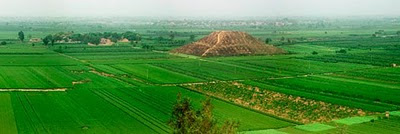
Weird festivals? Strange celebrations? Bizarre events? Those of us in the United States have our share. I mean – sheesh: how about giant balloons in the shape of long-cancelled cartoon characters? Celebrities waving from flower-covered 'floats'?
Weird, strange, bizarre, though, really is in the eyes of the beholder. As one travels the globe and observes the variety of fairs, festivals, and frivolities, that point becomes crystal clear. Although human behavior doesn't vary much, the methods of public celebrations certainly do.
For some baffling reason, for instance, people like to throw things. And depending on the country, what they throw is likely to be different. In Binche, a small town in Belgium, the projectile of choice is a fruit. On Sunday, Monday, and Tuesday before Ash Wednesday Binche the town is visited by masked figures called Gilles who – later on in the festivities – carry large baskets of oranges through the town. Many of these oranges are calmly, orderly, handed to residents as well as tourists. Others, though, are rather vigorously … well, thrown at wary residents and unfortunate tourists.
Meanwhile, if you happen to be in Buñol, Spain, on the last Wednesday in August, you also might want to duck as the fruit thrown there – while not as hard or potentially damaging as an orange – can still sting a bit. What's fun about Buñol isn't just the hurled tomatoes but that the town, which normally has a population around 10,000, swells to closer to 60,000 as folks from all over come to throw -- and get thrown at.

If you happen to be in Taihape, New Zealand, things will be flying through the air but none of them – at least as far as we know – have been thrown at anyone. Nevertheless, a festival where people try to throw a gumboot as far as possible could pose some risks to passersby and participants alike.
"Oni wa soto! Fuku wa uchi!" are words you might want to keep an ear open for if you're in Japan during Setsubun, and happen to see a member of your household holding a handful of roasted soybeans. Mamemaki is the term for it, and "Oni wa soto! Fuku wa uchi!" ("Demons out! Luck in!") is what is traditionally said before the beans are thrown out the front door – or at another member of the family.
If you happen to be in India during Holi, the festival of color, you also might want to avoid wearing your best suit of clothes. As part of the celebration, a brightly dyed powder called abir is merrily thrown everywhere – and especially at each other.
Fortunately, not all festivals in the world include hurled objects. Some just have unique themes. Japan's Hōnen Matsuri is a fertility festival, uniquely celebrated in the city of Komaki. By unique we mean prodigious, tumescent, large, and … okay, enough with the jokes, especially since the object of the fertility being celebrated is that certain part of the male anatomy. A similar festival is also held in Kawasaki, called Kanamara Matsuri.
While nothing is thrown, and nothing terribly phallic is evident, there's a festival that absolutely has to be mentioned: an event featuring tremendous beauty that ends with ashes and smoke.
Around the middle of March, the city of Valencia, Spain, has a festival called Falles – a celebration of Saint Joseph. But long before the Falles, Valencia, the third largest city in Spain, begins to prepare: neighborhoods and a wide variety of organizations form groups called Casal Fallers who raise money for their own contributions to the festivities.

It's these contributions that make the event so incredible. Each group – working from a common theme selected for that year – creates a ninot, or puppet. Fashioned from paper, wax, Styrofoam, and a few other materials, ninots are whimsical, outrageous, profane, comical, political, and every one is incredibly beautiful.
The artisans of Valencia have had a very long time to perfect their craft, and it shows in each and every minot. Each figure and tableau is a hallucinatory mixture of a Renaissance masterpiece and a three-dimensional cartoon. Each one, too, is frequently a wildly executed satirical jab at everything from politics to tradition, from pop culture to the Falles celebrants themselves. Nothing is sacred, nothing is spared.
Then come the fires, and then the ashes. Yes, you guessed correctly: each and every minot, every figure and tableau is lit – exploding into the night sky in a roaring conclusion called La Cremà. In the morning there is nothing but ashes, and the memory of the wonders of the falles.
Regardless of location, the one thing every fantastic fair, festival, and frivolity has in common is that they all show how we're all very much the same – and that all humans, no matter where we live, are more than just a bit bonkers.







































